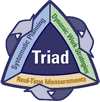
| Site Name | Naval Base San Diego |
| Location | San Diego, CA |
| Site Type |
DoD Facility |
| Project Lead Type |
U.S. Navy Lead |
| Reuse Objective Identified |
No |
The objectives of this investigation were to:
Implementation of a Triad-based, high-resolution site characterization (HRSC) approach for this investigation provided an expedited high-density data set and a refined conceptual site model (CSM) in near real-time. The approach expedited and optimized characterization of two VOC plumes from off-site, non-Navy sources. Trichloroethylene (TCE), perchloroethylene (PCE), cis-1,2-dichloroethylene (cis-1,2-DCE), and vinyl chloride were identified in groundwater. Potentially responsible parties and non-Navy sources were identified. There was excellent participation by all stakeholders, and the project facilitated increased trust and communication between stakeholders.
Using the Triad Approach resulted in cost savings estimated at $3 million and a schedule savings of approximately 6 years compared to a conventional approach.
Systematic planning was initiated early. Triad team representatives from the Navy, regulatory agencies, and consultants worked collaboratively to develop data quality objectives (DQOs), a draft preliminary CSM, and a proposed technical approach. Systematic planning continued through three phases of the project. Systematic planning meetings were held to present and discuss Phase I results and optimize Phase II, then to discuss Phase II results and optimize Phase III. Several systematic planning meetings were held during the field investigation on-board the Navy Site Characterization and Penetrometer System (SCAPS) truck, allowing stakeholders to see the real-time data collection in use and to have a voice in making dynamic sampling decisions. Systematic planning also included Web-based daily field reports, with data interpreted and decisions made collaboratively. Stakeholders downloaded field reports, signed off on project objectives, and had a voice in directing field decisions. An initial CSM examined pre-development and post-development factors, and showed the extent of PCE, TCE, cis-1,2-DCE, and vinyl chloride contamination.
A dynamic work strategy (DWS) was developed in collaboration with regulatory agency partners and the Navy. It allowed the field team to step out dynamically across the 295-acre site to meet project-specific DQOs. The project featured Web-based, near real-time communication of project data, allowing all project stakeholders to view daily reports and remain engaged in the project.
Real-time in-situ measurements were collected using the SCAPS truck equipped with cone penetrometer testing (CPT), membrane interface probe (MIP), and direct sampling ion trap mass spectrometer (DSITMS). A three-phased investigation was conducted. Phase I was a lithologic and DNAPL investigation using CPT with MIP and DSITMS to build out a detailed lithologic site model and identify VOC source areas. Phase II collected groundwater samples for 24-hour turnaround VOC analysis using U.S. EPA Method 8260B by a fixed-base laboratory. Phase III included the collection of additional samples to address data gaps identified by the Navy/regulatory project team. Eleven temporary wells were surveyed to estimate the site groundwater gradient.
To update this profile, contact Cheryl T. Johnson at Johnson.Cheryl@epa.gov or (703) 603-9045.